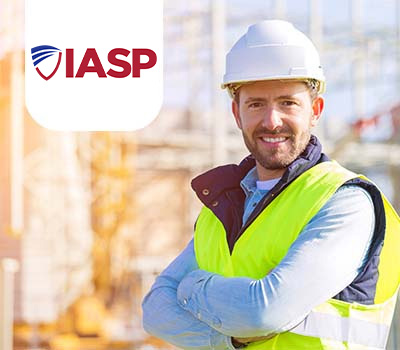About NASP: (National Association of Safety Professionals) NASP provides training, consultative services, and third-party certifications that validate knowledge, skills and abilities in the area of workplace safety. The primary mission of NASP is to provide safety professionals with innovative training opportunities that exceed basic OSHA compliance as well as professional certifications to assist them in carrying out their safety-related functions with confidence and proven competence. The wide portfolio of OSHA programs offered by NASP equip professionals with industry grade knowledge on best practices of Occupational Safety.
OSHA 10 Hour Construction Industry
This OSHA 10 Hour Construction Industry training program is intended to provide entry level construction workers information about their rights, employer responsibilities, and how to file a complaint as well as how to identify, abate, avoid and prevent job related hazards on a construction site.
The training covers a variety of construction safety and health hazards which a worker may encounter at a construction site. Training should emphasize hazard identification, avoidance, control and prevention, not OSHA standards.
Instructional time must be a minimum of 10 hours.
The minimum topic requirements are as follows:
Introduction to OSHA – 2 hours.
- overs workers’ rights, employer responsibilities and how to file a complaint. It includes helpful worker safety and health resources. It also provides a sample weekly fatality and catastrophe report, a safety data sheet and the OSHA Log of Work-Related Injuries and Illnesses (OSHA Form 300).
- Materials include an Instructor Guide, PowerPoint slides, student handouts, and participatory activities.
OSHA Focus Four Hazards – 4 hours.
- Falls (minimum 1 hour and 15 minutes)
- Electrocution
- Struck-By (e.g., falling objects, trucks, cranes)
- Caught-In or Between (e.g., trench hazards, equipment)
Focus Four Hazards Training Requirements
All lessons for the Focus Four Hazards are required to use the following terminal (TO) and enabling (EO) objectives:
TO: Given current OSHA and industry information regarding construction worksite illnesses, injuries, and/or fatalities, the student will be able to recognize [fall, caught-in or between, struck-by, electrocution] hazards in construction.
Specifically, for each of the focus four, the student will be able to:
EO 1: Identify major hazards EO 2: Describe types of hazards EO 3: Protect him/herself from these hazards EO 4: Recognize employer requirements to protect workers from these hazards
Because these objectives are the expected student outcomes, trainers:
- May not vary from these objectives when planning the training session; and
- Must follow the participatory training model by applying effective training techniques;
- Must make sure the objectives are measured by testing the student’s achievement.
Personal Protective and Lifesaving Equipment – 30 minutes.
Health Hazards in Construction – 30 minutes.
May teach noise, hazard communication, and crystalline silica or any other construction health hazard.
Elective – 2 hours.
Must present at least two hours of training on the following topics. At least two topics must be presented. The minimum length of any topic is one-half hour.
- Cranes, Derricks, Hoists, Elevators, & Conveyors
- Excavations
- Materials Handling, Storage, Use and Disposal
- Scaffolds
- Stairways and Ladders
- Tools – Hand and Power
Optional – 1 hour.
Teach other construction industry hazards or policies and/or expand on the mandatory or elective topics. The minimum length of any topic is one-half hour.
Assessment Criteria: The learners on the OSHA program are assessed externally via MCQ (Multiple Choice Questions) format after they have undergone the required/mandated no. of learning hours. The outcome of the assessment on securing a minimum of 70% and above is considered as a pass and processed for certification. Should the learner fail, he/she would need to undertake the assessment again and pass to attain the qualification
Get Your Query Answered / Get Expert Assistance To Choose the Right Course for You Or Your Associates







